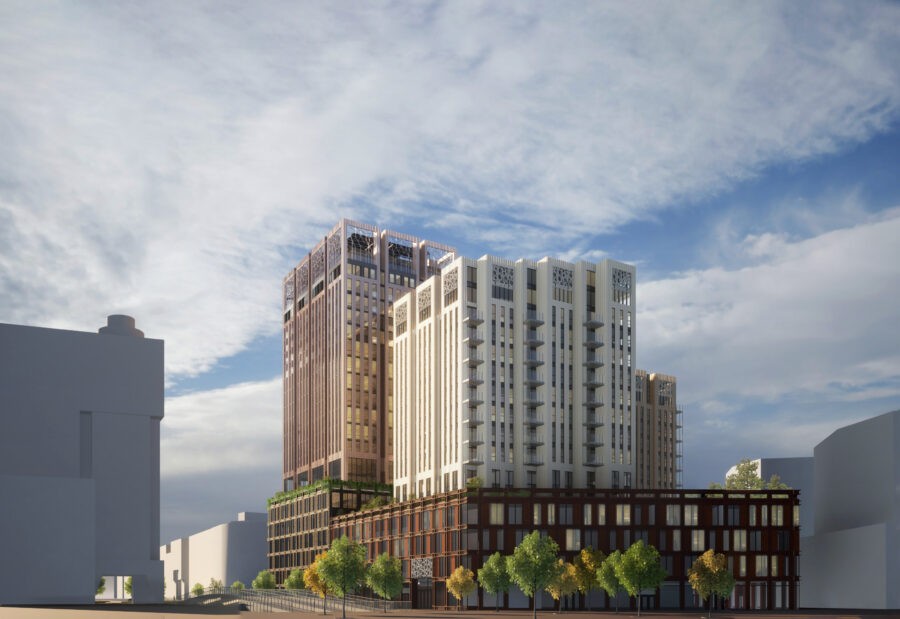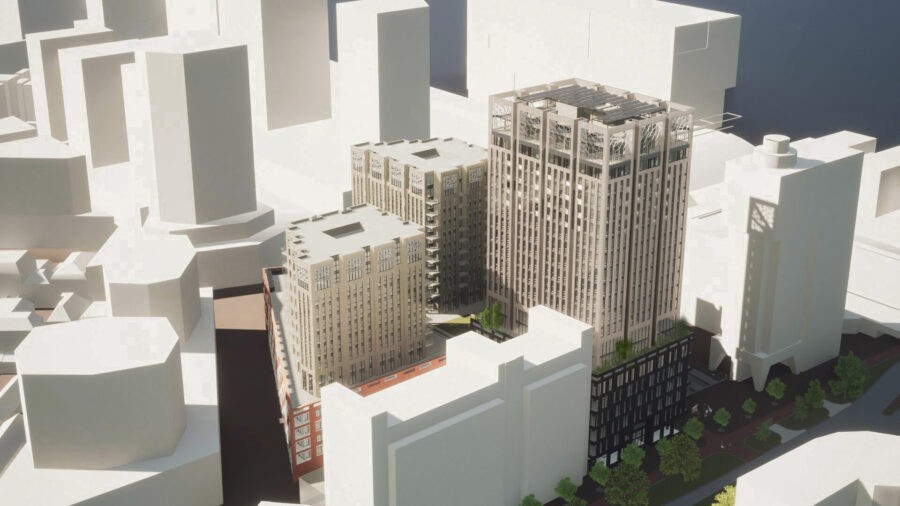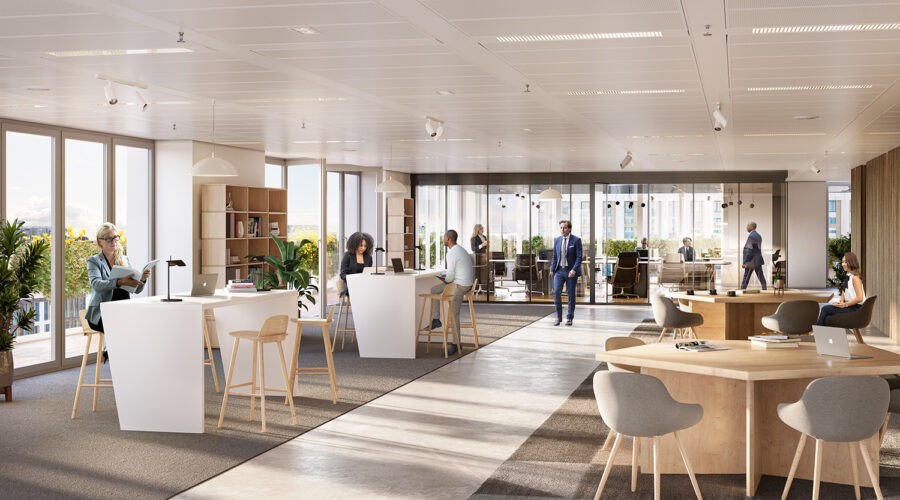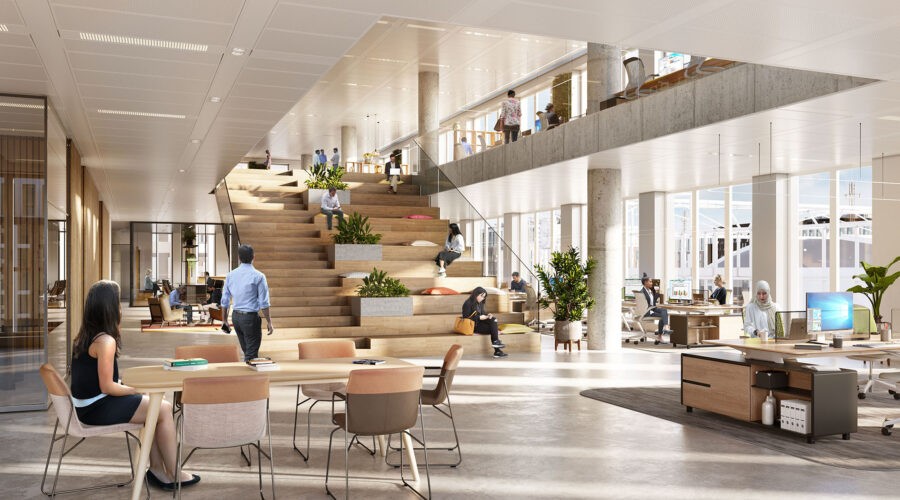Lorentz II
Between the busy Leiden central station, with 10.000 travellers each day, and the exponentially expanding Innovation District of Leiden and Bio Science Park, the ‘Lorentz’ is being completed. Named after Nobelprize (1902) winning physicist Hendrik Antoon Lorentz, the project lifts the quality of station area and connects the new developments to the historical city centre. As part of Leiden’s ‘Sustainable Kilometre’, it complies with the highest standards of sustainability and well-being for its users and its surroundings.
Three towers, coloured silver, gold and bronze, share a solid brick-coloured base. The first phase, with the two lower towers of apartments, has been realised as ‘Lorentz I’, now the second part of the plinth and the third, highest tower will complete the ensemble. Both plinth and tower have a very flexible layout, designed for a mix of apartments on the highest floors and offices in the lower part. The office floors can accommodate a variety of office lay-outs, with high standards for comfort and healthy working: for example, wide staircases connect floors, inviting users to walk instead of using elevators. The plinth combines meeting rooms, flex-working and co-working with catering functions (café-lounge-restaurant), servicing both tenants of the tower floors and smaller organisations or individual professionals: the easy interaction and dynamics here generates important synergy, adding value for all users.
‘Lorentz’ is not just a catchy name. It refers to Leiden as a centre of knowledge, with the Netherlands’ oldest university in its heart. The project, with high-end working and living facilities, is important to attract and bind top-talent for the city. Throughout the building and in the facade, the theme of science and physics can be recognised, with three large artworks crowning the towers in motifs of molecules (chemistry) and cells (biology) for phase I. The high tower of Lorentz II will be crowned in a Penrose diagram, remembering the research into black holes by physicist Roger Penrose (Nobel prize 2020): a suitable new highlight in the Leiden skyline.




